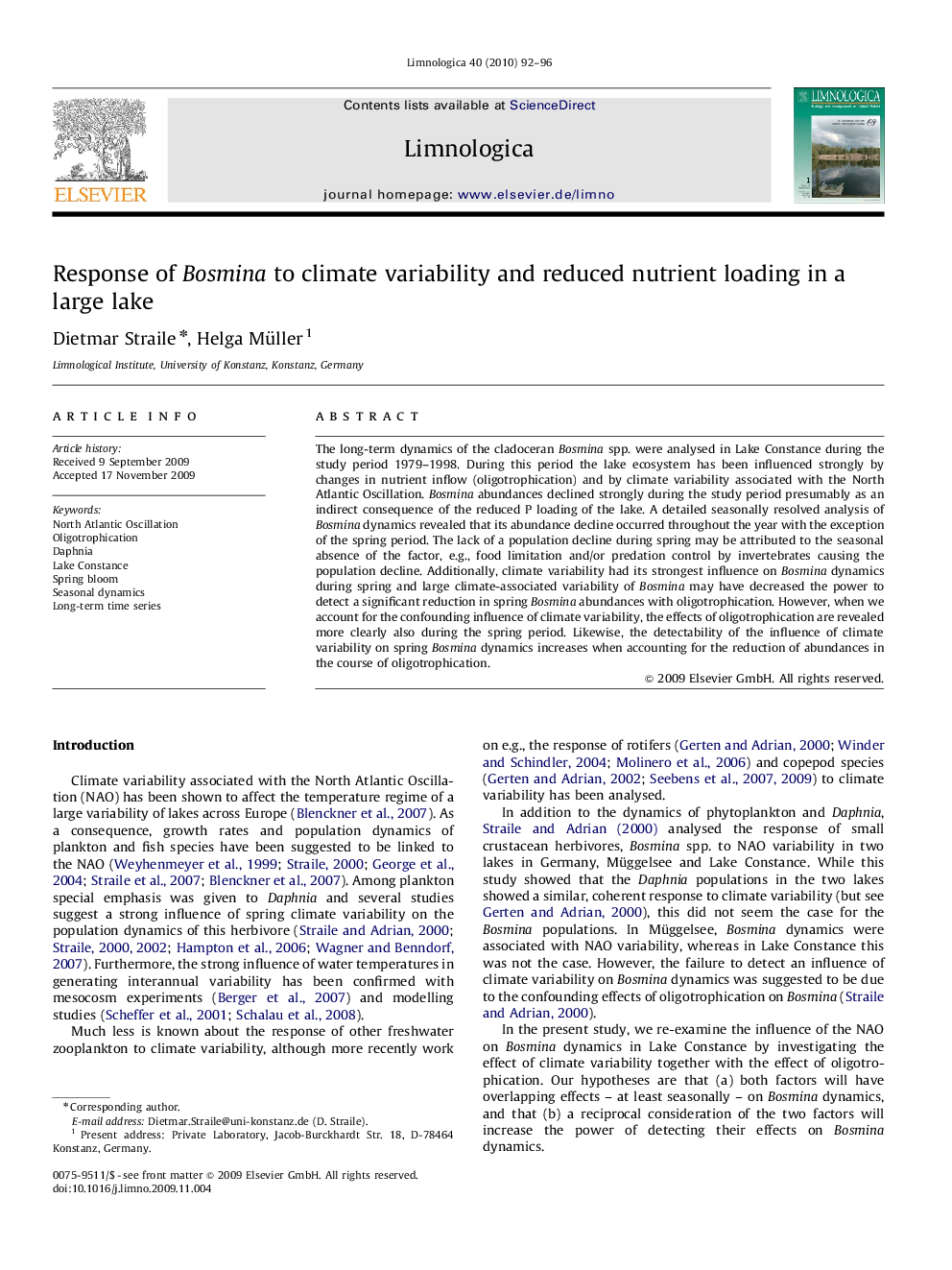| Article ID | Journal | Published Year | Pages | File Type |
|---|---|---|---|---|
| 4400585 | Limnologica - Ecology and Management of Inland Waters | 2010 | 5 Pages |
The long-term dynamics of the cladoceran Bosmina spp. were analysed in Lake Constance during the study period 1979–1998. During this period the lake ecosystem has been influenced strongly by changes in nutrient inflow (oligotrophication) and by climate variability associated with the North Atlantic Oscillation. Bosmina abundances declined strongly during the study period presumably as an indirect consequence of the reduced P loading of the lake. A detailed seasonally resolved analysis of Bosmina dynamics revealed that its abundance decline occurred throughout the year with the exception of the spring period. The lack of a population decline during spring may be attributed to the seasonal absence of the factor, e.g., food limitation and/or predation control by invertebrates causing the population decline. Additionally, climate variability had its strongest influence on Bosmina dynamics during spring and large climate-associated variability of Bosmina may have decreased the power to detect a significant reduction in spring Bosmina abundances with oligotrophication. However, when we account for the confounding influence of climate variability, the effects of oligotrophication are revealed more clearly also during the spring period. Likewise, the detectability of the influence of climate variability on spring Bosmina dynamics increases when accounting for the reduction of abundances in the course of oligotrophication.
